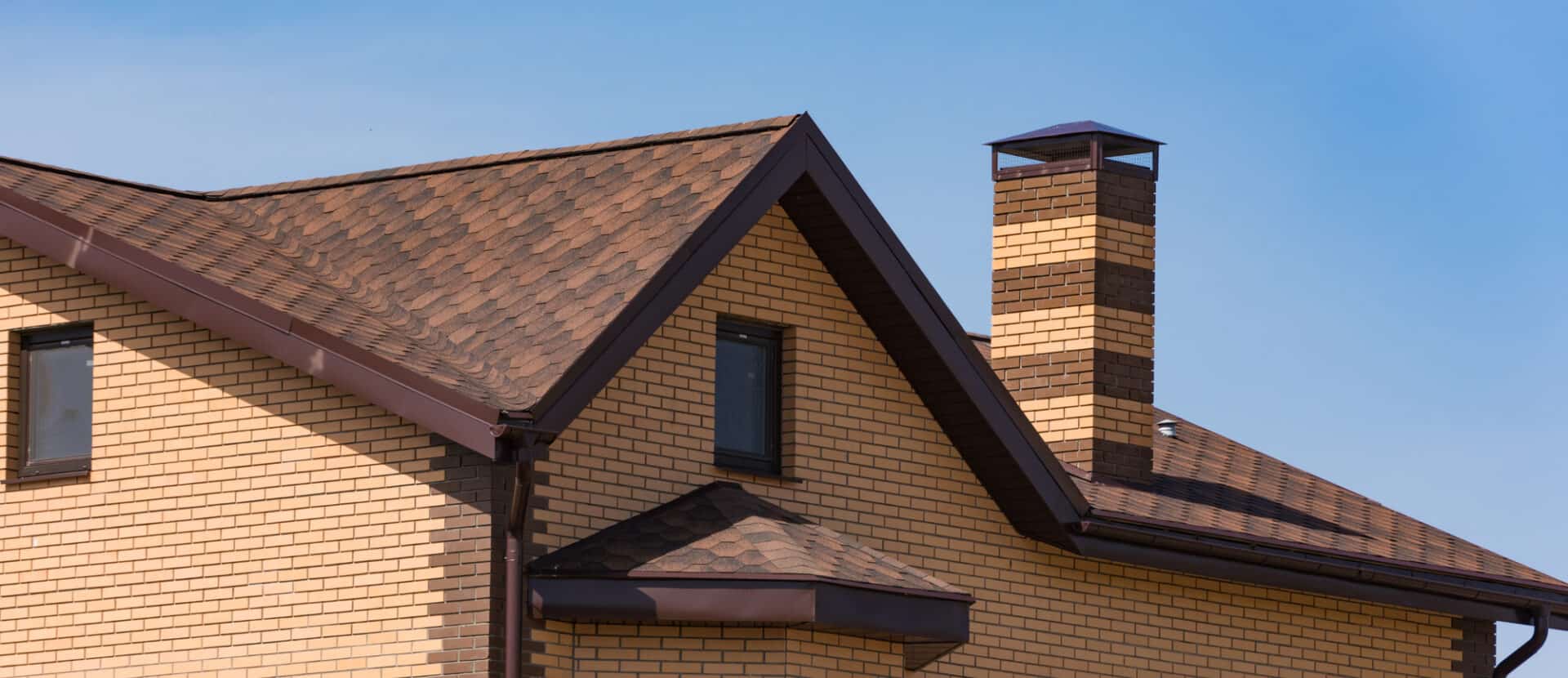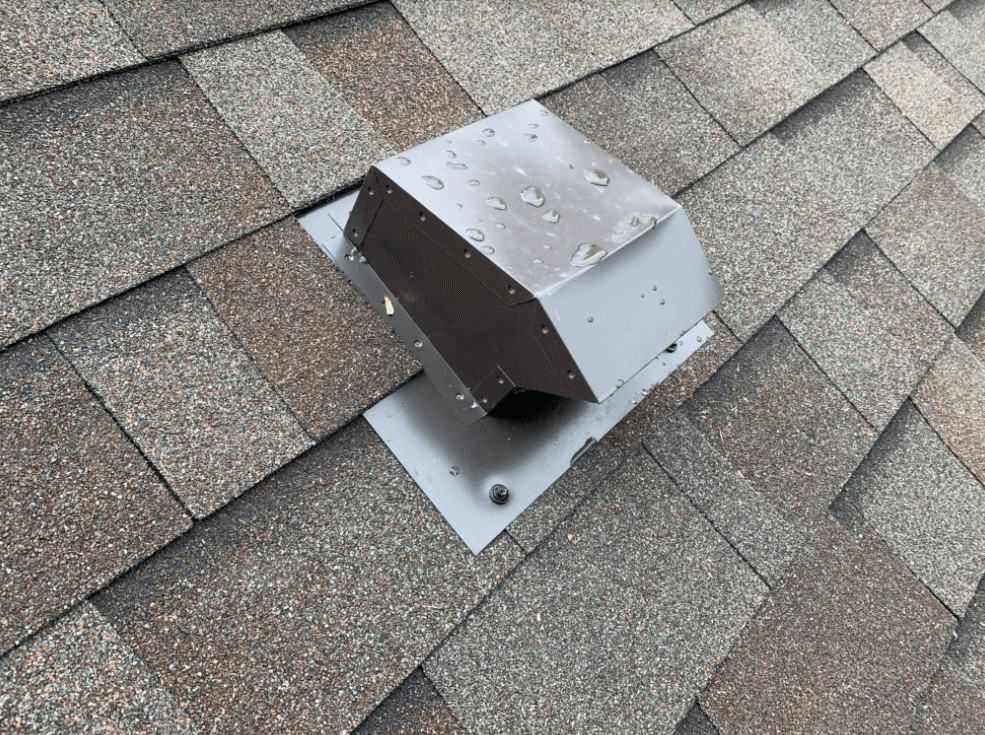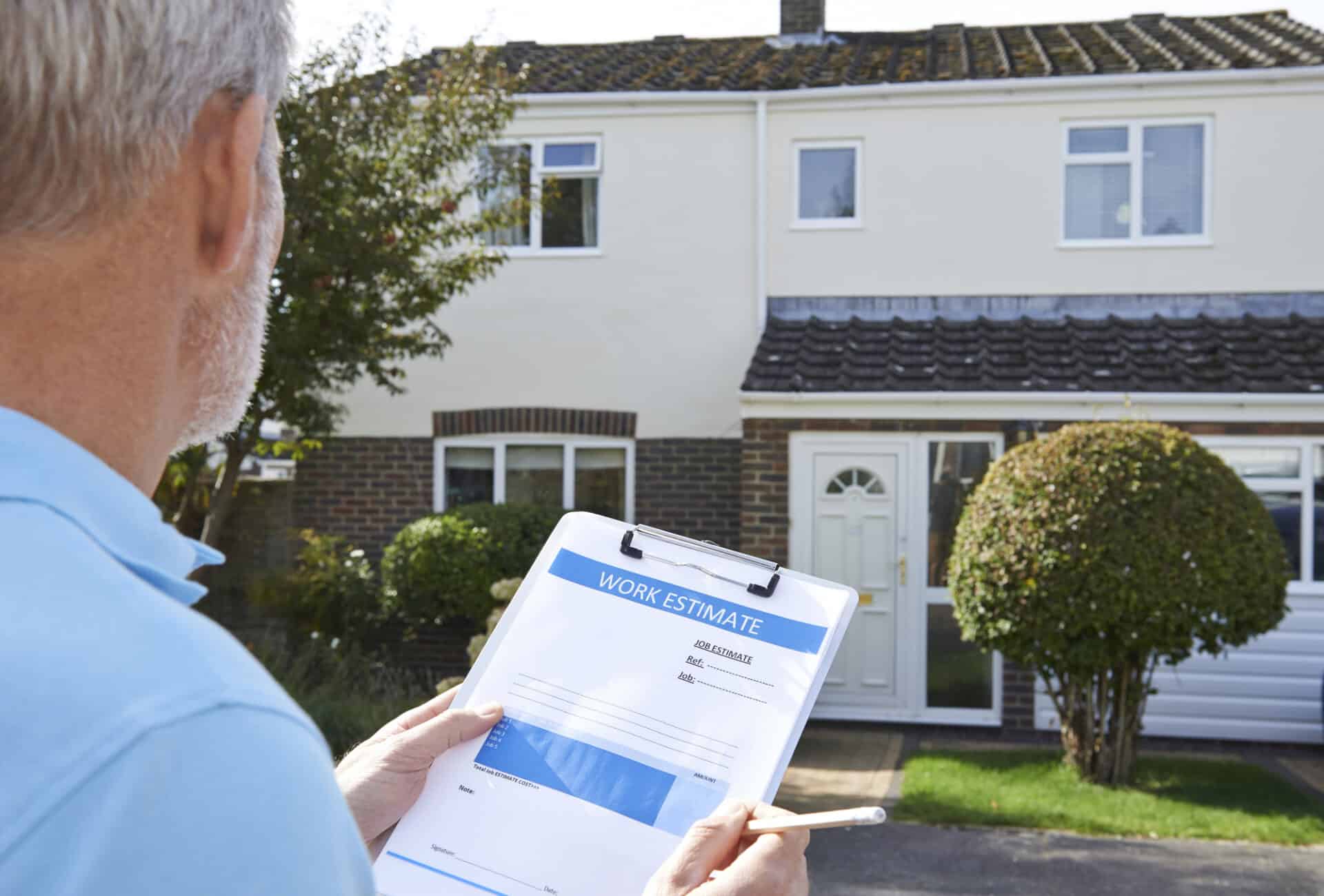The issue of a new roof cost is one of the most sensitive and hidden “secrets” out there. If you’re trying to get your roof replaced in Post Falls or anywhere for that matter, the price you get to replace it will vary widely, likely by thousands of dollars. So what determines how much a new roof costs? How could it possibly vary so much between contractors? Isn’t it just materials + labor + overhead + profit? Are some companies trying to make 50% profit while others are throwing it all away?
This short guide will clear up some of the misinformation about how much a new roof costs, and I’ll use some real numbers from our company to explain how we do our pricing. While there are many things that affect the price of a roof after the smoke clears, I’m going to cover the 4 biggest things that we look at to determine a new roof price.
THE BREAKDOWN OF ITEMS THAT DETERMINE HOW MUCH A NEW ROOF COSTS
There are four main things that will affect the price of your roof, they are:
- Materials
- Labor
- Overhead
- Profit
Let’s go through each of them and explain how it all works…
How Materials Affect The Price Of Your Roof Replacement
I’m going to focus on asphalt fiberglass shingle as my price base, since that’s what we specialize in. While there are many materials and accessories that go into a roof, these are the major players:
FELT PAPER
If you’re getting your roof replaced we highly recommend you tear off the existing material, as a layover (or “roof-over”) can lead to problems down the road. After all the existing materials are removed, the roof decking will need to be covered up with an underlayment (aka felt paper). This includes Ice Shield, which ranges from $0.23/sq. ft. to $0.37/sq. ft. and regular felt paper, which ranges from $0.05/sq. ft. for cheap paper to $0.15/sq. ft. for a high quality synthetic. Since ice shield is 3-5 times more expensive, your new roof cost will vary depending on the following variables:
- Quality of ice shield used
- Quality of regular underlayment used
- How much Ice Shield your contractor is using – Ice shield should be installed with at least 2 rows (6 ft.) at the bottom eaves, 1 row in valleys, around pipes, up every wall where there is flashing (walls, skylights, chimneys), low slope areas (2/12 – 4/12 pitch), and other vulnerable areas.
As an example, on a 5000 sq. ft. roof that’s fairly simple, using the cheapest materials possible and using the absolute minimum to (hopefully) skate by inspections would be close to $430. On the other hand, using high quality underlayments that will protect the home properly, and installing ice shield everywhere it needs to be would be closer to $1280. One will keep your new roof cost down, while the other will keep the future maintenance costs down.
ASPHALT FIBERGLASS SHINGLE
The shingle used is the biggest material expense that goes into the price of a new roof. The cost of shingle varies from about $0.65/sq. ft. to $2.75/sq. ft. (In North Idaho/Eastern Washington), depending on brand and style. This goes all the way from a basic architectural shingle to a high-end shingle like CertainTeed’s Grand Manor. Since many of the big brands of shingle went to the Limited Lifetime Warranty, they have also lowered their shingle weights considerably. Most brands don’t publish weights anymore, to avoid the issue. One of the reasons we like CertainTeed fiberglass shingles are because their low-end remains at around 2.4 lbs/sq. ft., where most others float around 2 lbs/sq. Doesn’t seem like a lot, but that’s 2,000 lbs (1 ton!) on a 5,000 sq. ft. roof. This missing material will be responsible for quicker aging and failure of said shingles.
Also included in the shingle category I would include starter and ridge cap shingles. This price can change depending on quality bought, also if the contractor grabs shingles that are “on their way out” they can usually get a good deal and bring the price down. The quality of those shingles may be in question though.
FLASHINGS
Flashings are the metal accessories used on the roof. They include drip metal, step flashings, roof to wall (also known as apron flashing), counter flashing, pipe flashings, skylight flashing kits (if applicable), valley metal, and other custom flashings. We highly recommend replacing all existing flashings on a roof – if you want your new roof to last for the next 25-30 years, you’re putting a lot of trust into old metal flashings if they are not replaced. If you have just one spot rust out on an old flashing, it could mean thousands of dollars in water damage, mold remediation, etc. Installing all new flashings will prevent problems like this.
Depending on what the contractor is going to do for you could greatly change this price. To give a low price, a contractor could re-use all your existing wall flashings, use a minimal drip edge, rubber pipe flashings, and omit valley metal. On the other hand, if your contractor is going to use a bigger drip edge, install all new wall flashings, use all metal pipe flashings and install valley metal this will change the price of this piece dramatically. Plus it’s going to be much more labor intensive so that will go up too.
To give you a few examples, 1 3/8″ x 1 3/8″ G-drip edge (which doesn’t pass code and shouldn’t be used anymore, but still is) can be picked up for about $2/stick (1 stick covers 10 ft), while 2″x2″ G drip edge costs around $5.50/stick.
Valley metal is around $1/ft for galvanized (which should be concealed) or around $2/ft for W-valley metal, which is painted and will remain exposed. If no valley metal is installed this cost will be saved, however we repair a lot of homes that don’t have valley metal, and the shingle broke through in the valley, allowing water to pour into the living room or entry way of the home.
Step flashings and apron flashings cost about $.75-$1/ft. If these flashings are re-used, you’ll save the cost of the flashings, but also a lot of labor to dig all those old flashings out and install new ones. This extra cost is one of the big reasons most contractors re-use everything they can.
VENTILATION
A roof system that is built to last needs the proper amount of ventilation. All contractors should be upgrading your ventilation to code if it doesn’t meet minimum requirements (though some still don’t). There are basically two types of venting you can go with: roof louvers (“cans”) or ridgevent. If you go with cans, they will be visible from the ground and can either be plastic or metal. Some metal vents which vent more area per vent cost about twice as much, but there will be less of them on your roof.
If you decide to upgrade to ridgevent, then all of the holes from existing roof louvers must be covered up to make it effective. This requires replacing the plywood that has vent holes cut in them, then cutting a 2″ strip down the ridge to let air flow out.
The most important part about a ridgevent is that it be hand-nailed with minimum 2 1/2″ roofing nails to ensure they actually hit plywood. Regular 1 3/4″ nails (the longest you can shoot from a gun) won’t penetrate the wood decking and will result in nails backing out and could lead to blow offs. This not only costs more in materials (for the ridgevent and plywood) but it also increases labor costs since it takes longer.
ADDITIONAL CHARGES
If a contractor offers additional items that are customized to your roof these will fall under Additional charges. This could be things like extended warranties, portable restrooms for the crew to use rather than coming into your home, or additional benefits provided. Depending on how the contractor divides things up this category would also cover other expenses like dump fees, permits, asbestos testing (if needed), delivery fees, and flashing paint (for all metal pipe flashings and stove pipes) – basically any costs that don’t fit in the above categories.
How Labor Impacts How Much Your New Roof Costs
Obviously if you want a new roof installed on your home, someone has to do the work. And since people need to make a living, they must be paid. Here’s the cost breakdown of labor for a roof replacement project.
TEAR OFF
Tear off is a crucial part of any re-roof project. To ensure there are no future problems, the existing roof should always be removed. This allows an inspection of the roof decking and the replacing of metal flashings for a long lasting roof. The labor for tear off will change depending on how many layers of shingle a roof has, as well as other things like how well they protect the property. We’ve found that to do a truly good job with plenty of prep it takes much longer than just throwing a tarp down on your landscape and dumping all the shingles on it. This includes prepping the home with plenty of tarps, covering plants with wood tepees, hanging tarps off the edge of the roof to make sure shingles don’t hurt the siding, and picking up and dumping the shingle.
To avoid the cycle of burning young guys out and the high turnover rates that most companies have, we pay our guys a livable wage and treat them like people, not units of production. We want our guys to have enough money to live and save up for winter when there is less work and money is harder to come by. Since we also take our time to protect the homes we work on, and make sure things are done right, this will amount to more up front cost for your new roof. However it could save you a lot of hassle and money re-doing landscaping and fixing broken siding.
Obviously if a company pays their guys as little as possible, rushes them to get things done, and does a quick prep job instead of a thorough inspection, the labor cost of your new roof would go down considerably. If laborers are hurried to get stuff done, things may be missed, accidents may happen, and your property (windows, siding, the pristine landscaping you’ve put so much money and time into, etc.) may get caught in the cross fire.
FELT AND SHINGLE INSTALLATION
Felt and shingle installation is skilled work that is critical to get right. If a single mistake is made during the installation, water could get into the home and cause a lot of damage. Sometimes without you ever even knowing! For this reason, anyone skilled enough to be a roofer should be getting paid a good wage that is comparable with their skill. We pay our guys by the square to install shingles. We require very high quality and competence, so we force our roofers to slow down and do a good job rather than just blowing through roofs to “get paid and get out.” Because of this we pay our guys more per square than some other companies. We want to provide for their families well so they stick around and do a great job for a long time! We find that by paying our guys more while requiring a very high level of quality gives our clients the best result possible.
Pay per square also varies depending on several factors:
- difficulty of the roof – the more sides, angle, and objects to work around will increase how much we pay our roofers since it takes more time
- steepness of the roof – obviously it takes more time to install a roof on a steep roof that you can’t walk on versus a low slope that is easily walkable (plus it’s much more dangerous)
LABOR BURDEN
To run a legit company and be above board with all the government regulations and requirements there is a burden that must be paid on all wages. There are three basic expenses tied to wages:
- Worker’s Compensation – insurance that covers workers in the case of an injury at work.
- Unemployment – so they can collect unemployment when work gets slow in the winter
- Social Security – Uncle Sam’s retirement plan…
These 3 things combined equal a labor burden of just under 35%. That means any company that isn’t playing games with the government and trying to dodge taxes must pay an additional $35 for every $100 they pay a worker. Obviously this expense can be reduced by flying “under the radar,” but I would highly recommend against hiring any company that operates like that. Chances are they will eventually get caught and go under, not to mention that if anything happens to one of their guys you could be held liable since they were working on your roof.
This also explains why many companies are very hurried on every job they do. To keep prices low a lot of companies will cut back on labor costs, then drive their guys hard to get stuff done. This can result in cut corners and problems down the road for you.
As an example, say you own a nice home with a 5000 sq. ft. roof on it. To compare how labor can affect how much a roof costs, let’s do a couple scenarios.
Scenario 1: Contractor runs a legit company, but offers limited warranties and focuses more on low price than quality. Say he charges for about $0.15/sq. ft. on tear off(inc. felt installation) and for the roofing. Since his guys can work fast and get more than a square done per hour he figures he’ll have enough to spare in case there’s a problem. At these rates you’d be charged $750 for tear off and $750 for roofing. That’s a total of $1500 for labor, and a labor burden of $525 (.35 x 1500)
Total Labor cost in scenario 1: $2,025
$1500 total labor sounds like a lot, but it is only 100 man-hours @ $15/hr. With a crew of 5 guys, that means your 5000 sq. ft. MUST get torn off, felted, and re-roofed in just 2 1/2 (8 hour) days (20 hrs each guy). If it takes just 4 hours longer (3 total days w/ 5 guys) this contractor will lose approx. $300 in labor and $105 in burden. That’s $405 straight out of the profit if it doesn’t get done fast enough. So you can bet he’s going to be pushing his guys like crazy so they get it done in time.
Scenario 2: This is a contractor more like us. They will offer the best warranties and will guarantee you a leak-free roof. They focus on quality instead of low price and encourage their guys to do things right rather than fast. They will pay their guys closer to $0.20/sq. ft. for tear off, $0.03/sq. ft. for installing the underlayment, and at least $0.20/sq. ft. for installing the roof. This would come to a total of $2,150. Plus extra for taking the time to install new flashings around the whole home, about 120 linear ft. will take 2 skilled guys about 5-6 hours (including cutting siding, removing flashings, installing new flashings and a new trim board caulked and painted for a finished look). So another $240 for flashings replacement. Total labor: $2,390. Total burden: $836.
Total Labor cost in scenario 2: $3,226.
As you can see, depending on the work to be done labor can change how much your new roof costs quite quickly.
COMMISSION
There is a lot of run-around on every job that a company acquires. So much, in fact, that it’s a full time job! Even though no one likes to “pay the middle man” it’s one of the most important positions in any company. If there’s no one working with potential clients and helping them understand what the business has to offer them, the business will have no clients and will go bankrupt. Companies should be providing a commission to their sales team that is between 8-12% of the sales price to keep them around and make sure they are taken care of.
How Profit Affects the Cost Of a New Roof
All companies, no matter how big or small, must make a profit. If profits are not made then there’s really no reason for a company to exist. This includes manufacturers of shoes, your Dentist, your mechanic, and even the grocery store. Simply put, a business that does not profit does not stay in business. The question is how much profit is acceptable?
Depending on the industry and the company, net profits percentages can vary widely. According to this article, in 2011 Microsoft had a net profit of 27.7%, while the average net profit of the S&P 500 was 10.6%.
The bottom line for many companies is how much profit is worth the risk of operating? Obviously if you invested $100,000 in a company you would want a return on your money, otherwise what’s the point, right? Since the stock market averages around 10-12% (since inception) you’d probably expect much more than that since a small business is much riskier than throwing your money in the market.
That said, we shoot for a 10% profit. I’m not sure what other companies go for.
How Overhead Affects How Much Your New Roof Costs
In order to operate any business there are many expenses that must be paid that don’t fall under materials or labor. Office staff, software, accounting fees, insurance, trucks and equipment, advertising, business licenses, rent and property taxes are a few of the expenses that must be paid in order to provide a service to you. If a contractor doesn’t charge for these expenses, bills go unpaid and the business goes away.
While many companies operate with different overhead percentages, according to Michael Stone, a professional consultant with 30+ years of experience, specialty trades like roofing average around 17%-24% overhead expenses. Which basically means if a roofing company does $1,000,000 in volume, they will spend between $170,000 – $240,000 on overhead expenses.
What this means for you is if you pay $20,000 for a new roof, approximately $3,400-$4,800 is to cover overhead expenses. If these are not added to the price of your roof, the contractor will go out of business eventually – usually once his funding and credit lines run out.
Since we run on a pretty slim budget and are very financially aware, we end up at the lower range of the average, running at about 18-20% overhead.
How Much Will My New Roof Cost?
To give you even more context, I’ll give you a rough estimate of what one of our bids look like on an example $20,000 roof replacement.
This is an actual proposal that we did a short time ago, so it’s using real numbers. I’ve just rounded the numbers to make them even and easier to understand.
The Anatomy of a $20,000 Roof
This particular roof was a 7/12 pitch and was moderately difficult, increasing labor costs a little bit. We also had about 110 feet of side wall and front wall flashing to replace
Here’s the breakdown:
Materials: $8,400
- Felt: $1,430
- Shingles: $4,040
- Flashings: $810
- Ventilation: $380
- Additional: $1,740
Labor: $5,800
- Tear Off: $1,460
- Shingle Installation: $1,670
- Labor Burden: 1,070
- Commission: $1,600
Profit: $2,000
Overhead: $3,800
If you’d like to see a list of the materials we use in our roof replacements, check out this guide to the best roofing materials for your home.
What If I Get A Cheaper Bid/Estimate?
We are often not the cheapest contractor that most of our clients talk to. In fact, we’re usually always one of the highest. And we’re OK with that.
Also you must keep in mind, if you get an “estimate” then you may end up paying more after the job is done. If your contractor doesn’t give a guaranteed price like we do, you may get greeted with a not-so-pleasant surprise.
We focus all our efforts on doing the best job possible for each and every one of our clients. While we would love to be the cheapest price and give the absolute best quality, we’ve come to the realization that it just isn’t possible. To lower our prices means we would have to sacrifice quality on one of the above items.
To lower our prices we would either have to:
- Buy cheaper materials (which would result in an inferior end product for our clients and prevent us from offering our lifetime no-leak guarantee)
- Pay our workers less (making it harder to retain good skilled guys since they can’t provide for their family)
- Stop making a profit (and make it impossible to back up our warranties since we’ll be out of business)
- Charge less for overhead (and slowly get further behind on our bills, payroll, etc, and go out of business)
Unfortunately everything we could possibly do to cut prices makes it so we can’t give our clients a great result, and we just aren’t willing to do that!
Call For a New Roof Quote
If you are in Spokane, Post Falls, or surrounding communities, get in touch with New Heights today for a quote. We will give you a roof price that is reasonable.




